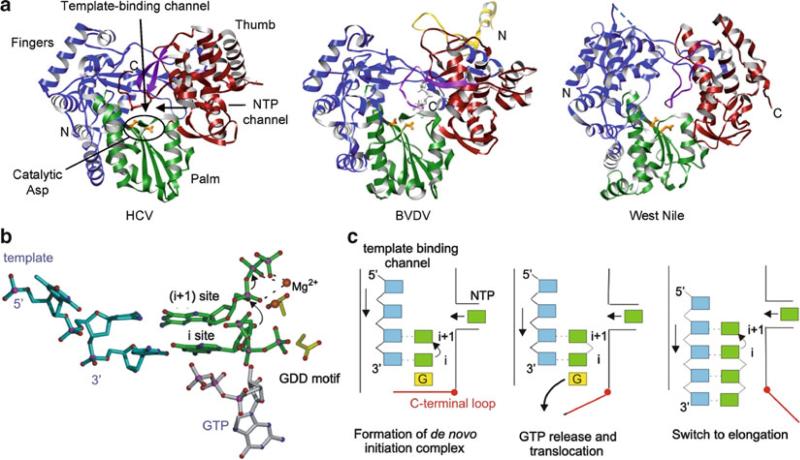Fig. 12.8.
The Flaviviridae RNA-dependent RNA polymerases that use a de novo initiation mechanism. (a) Hepatitis C virus (HCV), Bovine viral diarrhea virus (pestivirus, BVDV), and West Nile virus (flavivirus) are shown with their fingers, palm, and thumb domains colored in blue, green, and red, respectively. The yellow region of BVDV polymerase is a part of the N-terminal domain. The C-terminal motif in the thumb domain that occludes the active site is shown in purple, and active site residues are shown as orange sticks. (b) Model of initiation complex illustrating the proposed role of the de novo GTP. The role of GTP in de novo initiation may be to stabilize the initiating NTP at the “i” site. (c) Schematic of de novo initiation in Flaviviridae polymerases. The initiation complex, consisting of template (blue), two NTPs (green), and GTP (yellow), is assembled in the active site. The C-terminal loop is closed to further stabilize the initiation complex. After the nucleotidyl transfer reaction, the GTP molecule required for stabilizing the initiation NTP is released and the template–primer translocates by one base. The C-terminal loop in the thumb domain opens up to allow dsRNA to move out of the active site and the polymerase transitions from the initiation to the elongation phase (Choi and Rossmann 2009)

